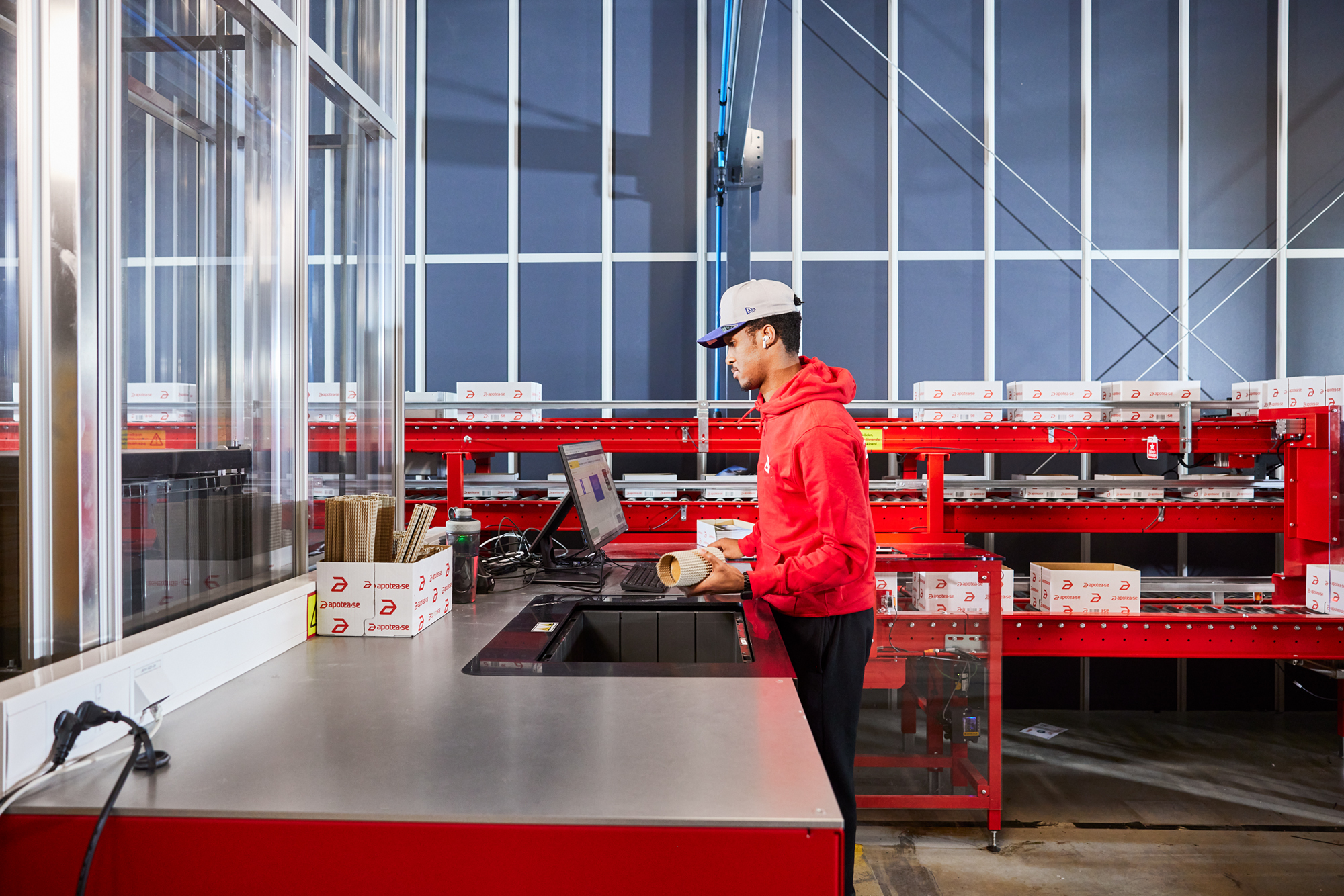Five tips for better warehouse workforce management

Labour costs typically account for 50-70% of a warehouse’s total operating expenses, making effective warehouse workforce management critical to maintaining a streamlined, productive, and cost-effective operation. The number of people making purchases online is ever-increasing. Global e-commerce sales were estimated to exceed $5.7 trillion in 2022, a figure expected to hit new heights in the years ahead. This robust growth puts immense pressure on distribution centres, especially frontline workers dealing with a surge in orders volume.
Strategic warehouse manpower planning offers a way to overcome labour shortages and other issues. Here are five tips on how to bridge the labour gap and improve efficiency:
1. Embrace automation and robotics
Integrating advanced technology into warehouse workforce management can bring about transformative change. Over 50% of an average distribution centre’s workforce engages in tasks like picking, packing, and shipping customer orders. Companies that have minimised human transit time – either through improved physical layouts or partial automation – have successfully reduced their dependency on additional employees.
Warehouse management systems (WMS) and warehouse control systems (WCS) play a vital role in optimising inventory control, boosting the productivity of systems and equipment, and streamlining operations. Additionally, automated storage and retrieval systems (ASRS) have proven highly effective in enhancing workforce efficiency, eliminating errors, and increasing overall throughput.
The UK’s leading football teamwear supplier, Direct Soccer, is a good example. The company’s growing customer base triggered the need to maximise available floor space, reduce lead times and increase throughput. It subsequently invested in an AutoStore solution from Element Logic, enabling it to ship orders directly from the system.
As a result, the putaway process is now significantly faster, matching the pace of online orders and preventing stock build-up. It also saved the business the need to hire two additional employees. A key feature of AutoStore is its autonomous operation capabilities. It can function independently, irrespective of whether staff are on-site or outside their typical work shifts.
Warehouse and distribution centre managers can also enhance frontline workers’ schedules by utilising automated labour scheduling systems that consider employee preferences and needs. Implementing exact labour forecasting leads to more predictable work schedules, minimising last-ditch changes.
This boosts morale and reduces turnover rates, giving employees greater flexibility to work on terms that suit them. It also helps avoid overstaffing during slow business periods while allowing efficient production scaling during peak periods.

2. Examine historical data and predict patterns
To ensure efficient warehouse manpower planning, it’s crucial to carefully analyse historical data to identify demand patterns and seasonal fluctuations. Warehouses often require temporary workers during peak seasons, requiring an ability to identify peak periods, industry trends, and demand-influencing factors.
By employing a data-driven approach, you can accurately estimate the necessary workforce size and skill sets, ensuring the right personnel are available at the right time. This improves both customer fulfilment and cost-effectiveness in operations.
An ASRS like AutoStore does precisely that. It offers scalability in line with demand fluctuations, helping warehouse managers balance their workforce numbers with the size and capacity of the system, and mitigate overcapacity or understaffing issues.

3. Cross-train employees for flexibility
Creating a more flexible and versatile workforce is essential for meeting operational demands, an outcome that cross-training provides. For instance, you can cross-train your pickers to pack orders, loaders to operate forklifts, or supervisors to handle inventory control.
Automation takes this flexibility and versatility even further. An AutoStore system executes manual tasks with high efficiency, enabling warehouse operators to allocate human resources towards more complex tasks. Such flexibility optimises productivity and minimises employee turnover rates, creating a more efficient and stable workforce.
4. Nurture a safe and engaging work environment
Employee engagement is an integral part of effective warehouse workforce management. Creating and fostering an engaging work environment will help ensure the facility operates efficiently, productively, and safely.
Compared to office-based workers, warehouse employees encounter more physical challenges, such as moving heavy items, working in confined spaces, and repetitive motion. An ASRS can limit the need for human intervention, thereby putting less physical stress on employees and reducing risk of potential accidents.
By handling tasks that may pose safety risks to human operators, AutoStore can improve the overall safety of the warehouse environment. And bolstering safety boosts morale by instilling in employees a sense of security and confidence when they know their health and wellbeing is a priority.
Communication between you and your employees is also essential for keeping them engaged. Promote a culture where they can share feedback and suggestions freely, conduct regular meetings to discuss concerns and ideas, and create an environment built on trust and respect.
A culture of open communication, recognition, and continuous improvement ensures that employees feel valued, engaged, and motivated to contribute their best. Open communication will also result in collaboration, promoting creative problem-solving and boosting productivity.
5. Continuously monitor and adapt
Successful warehouse manpower planning and management strategies require ongoing monitoring and adjustment. This involves continuous monitoring of key performance indicators such as productivity rates, order accuracy, and turnover to identify areas for improvement. Utilising data-driven warehouse software will help operators keep track of these KPIs, save time and money, and improve data quality.
Good planning also requires regularly reviewing market trends to identify changing workforce needs. By doing so, warehouses can proactively tackle emerging challenges and adjust their talent management strategies accordingly.
Regular feedback from supervisors, employees, and stakeholders is equally vital in identifying areas for improvement. Embrace feedback loops, set benchmarks, and actively seek input from these parties to cultivate a culture of continuous learning and refinement.
By Gavin Harrison, UK Sales Director, Element Logic
Ready to learn more? Get in touch today to discuss how AutoStore can contribute to more effective warehouse workforce management.



